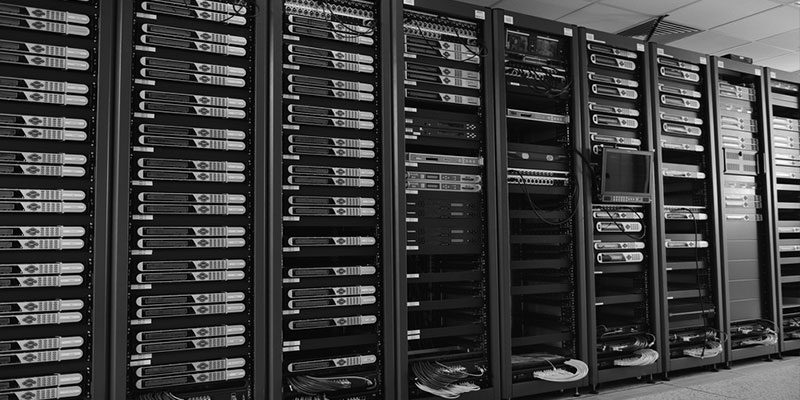As per the report published by Fior Markets, the bare metal cloud market is expected to grow from USD 5.5 billion in 2020 to USD 33.4 billion by 2028, at a CAGR of 25.3% during the forecast period 2021-2028.
The global bare metal cloud market is witnessing significant growth in past years. This growth is attributed to advanced technology. Rising adoption of hybrid-based bare-metal cloud, hybrid bare metal cloud system provides both on-premises and cloud-based bare-metal data center storage systems for efficient operations. The hybrid bare metal cloud offers flexibility to organizations in selecting a suitable cloud deployment model for each workgroup. Bare metal cloud helps eliminate the shortcomings of both public and private clouds by delivering the high-speed performance of dedicated physical hardware. This is set to drive market growth.
The Bare Metal Cloud is a subset of the IaaS cloud services bucket. It is a provider that carries dedicated server hardware and the data center networking, storage, and facility that houses it. It is bought monthly or, in finance terms, as an OpEx or Operational Expense. Other IaaS services will generally consist of a managed Hypervisor and control portal; however, Bare Metal Cloud only includes the hardware and restrained portal capabilities. Bare Metal Cloud permits clients to govern the hypervisor or operating system installed immediately on the hardware. Licensing, management, and configuration of that software program is all the end-customers responsibility. Bare Metal Cloud is for IT specialists who need the flexibility, predictability, and scalability of cloud service but need to maximize their control.
The global bare metal cloud market is expected to witness significant growth, owing to the increasing need for reliable load balancing. Load balancing improves the distribution of extra workloads throughout the bare metal cloud servers to permit smoother functioning and allocation of assets to a couple of processes. Load balancing solutions permit ease in configurability and flexibility to control site visitors and resource utilization throughout server nodes in the real-time end-user environment. Hence, it becomes important to install reliable load-balancing operations over the cloud. The factors restraining the market growth are a high initial investment, protecting and upgrading a multi-tenancy server is less difficult because more than one client-server is upgraded at once from one centralized point. But it is more difficult if every consumer had their very own server such as in the case of bare metal because of high maintenance.
Key players operating in the global bare metal cloud market include IBM (US), Lumen (US), Internap (US), Rackspace (US), AWS (US), Oracle (US), Dell (US), Google (US), Microsoft (US), Equinix (US), Alibaba Cloud (China), Scaleway (France), Joyent (US), HPE (US), Limestone Networks (US), OVHcloud (France), Media Temple (US), Bigstep (UK), Zenlayer (US), and phoenixNAP (US). To gain a significant market share in the global bare metal cloud market, the key players are now focusing on adopting strategies such as product innovations, mergers & acquisitions, recent developments, joint ventures, collaborations, and partnerships.
- In April 2020, Oracle launched a new advanced bare metal E3 standard that supports 128 CPUs (128 cores, 256 threads) and 2 TB of RAM and has 100 Gbps of overall network bandwidth. The introduction of new standard solutions is set to drive the Company’s bare metal cloud market share.
- In February 2021, IBM launched high-speed, flash storage systems, hybrid cloud, and container-centric updates to make enterprise-class storage accessible to businesses of all sizes and needs.
- In April 2020, Oracle Cloud launched new bare metal and virtual instances powered by AMD’s second-generation Epyc “Rome” processors, intended for HPC and big data analytics workloads. The bare metal E3 standard computer case supports 128 CPUs, and 2 TB of RAM, and comes with 100 Gbps standard network bandwidth.
The hardware segment dominated the market and held the largest market share of 63.4% in the year 2020
Based on components, the global bare metal cloud market is segmented into service and hardware. The hardware segment dominated the market and held the largest market share of 63.4% in the year 2020. This growth is attributed to the increased demand for computing, network, and storage facilities to virtualize data centers.
The large Enterprises segment dominated the market and held the largest market share of 67.2% in the year 2020
Based on organization size, the global bare metal cloud market is segmented into small and medium-sized enterprises (SMEs), and large enterprises. The large Enterprises segment dominated the market and held the largest market share of 67.2% in the year 2020. This growth is attributed to the flexibility provided by bare metal clouds to run demanding workloads and less compute-intensive applications in a secure and highly available cloud environment.
BFSI segment dominated the market and held the largest market share of 40.1% in the year 2020
Based on organization size, the global bare metal cloud market is segmented into BFSI, retail and consumer goods, telecommunication, IT, manufacturing, healthcare, media and entertainment, government, and others. The BFSI segment dominated the market and held the largest market share of 40.1% in the year 2020. This growth is attributed to the secure storage requirement with the rise in the transactions and details related to them.



































